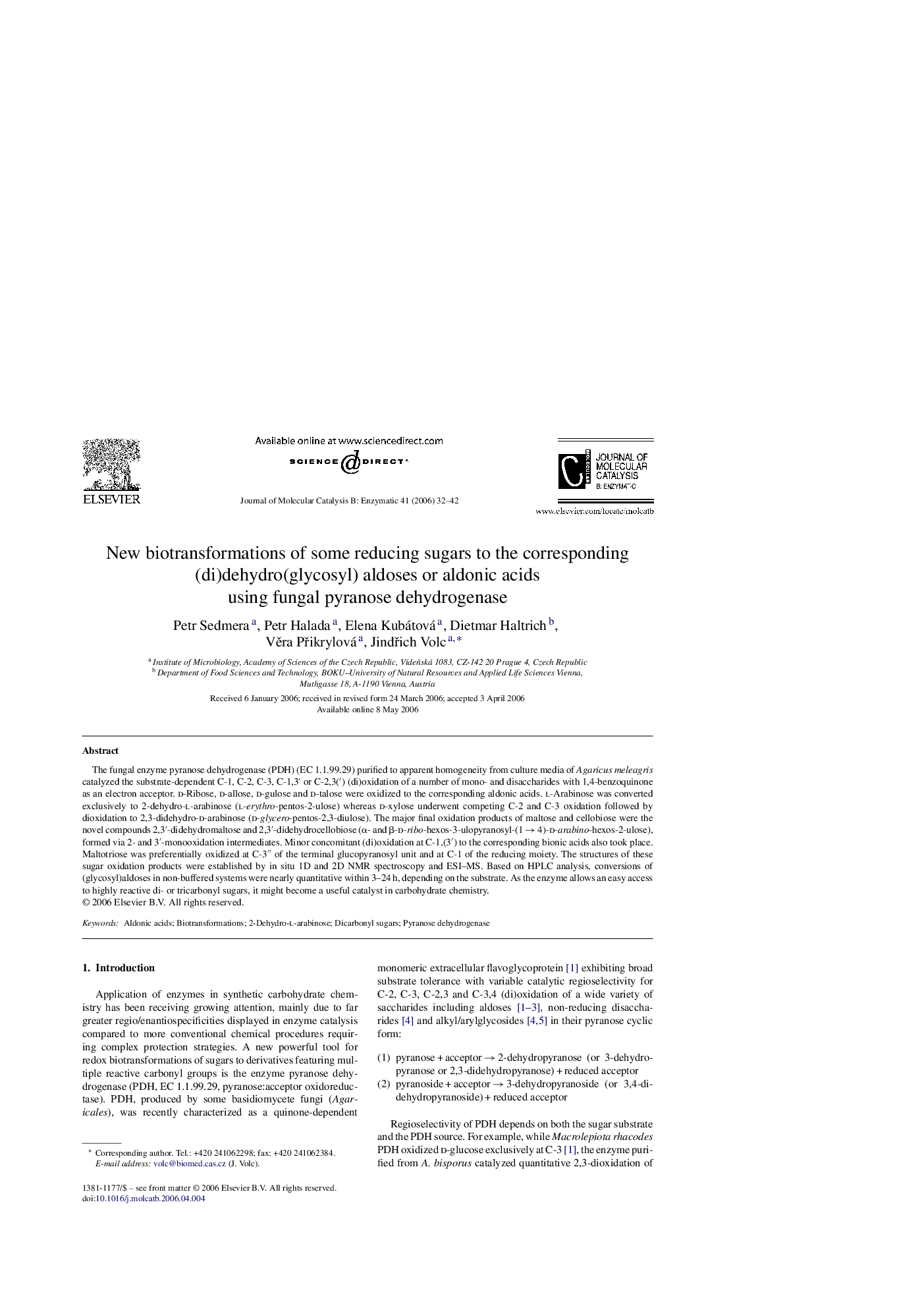| Article ID | Journal | Published Year | Pages | File Type |
|---|---|---|---|---|
| 70934 | Journal of Molecular Catalysis B: Enzymatic | 2006 | 11 Pages |
The fungal enzyme pyranose dehydrogenase (PDH) (EC 1.1.99.29) purified to apparent homogeneity from culture media of Agaricus meleagris catalyzed the substrate-dependent C-1, C-2, C-3, C-1,3′ or C-2,3(′) (di)oxidation of a number of mono- and disaccharides with 1,4-benzoquinone as an electron acceptor. d-Ribose, d-allose, d-gulose and d-talose were oxidized to the corresponding aldonic acids. l-Arabinose was converted exclusively to 2-dehydro-l-arabinose (l-erythro-pentos-2-ulose) whereas d-xylose underwent competing C-2 and C-3 oxidation followed by dioxidation to 2,3-didehydro-d-arabinose (d-glycero-pentos-2,3-diulose). The major final oxidation products of maltose and cellobiose were the novel compounds 2,3′-didehydromaltose and 2,3′-didehydrocellobiose (α- and β-d-ribo-hexos-3-ulopyranosyl-(1 → 4)-d-arabino-hexos-2-ulose), formed via 2- and 3′-monooxidation intermediates. Minor concomitant (di)oxidation at C-1,(3′) to the corresponding bionic acids also took place. Maltotriose was preferentially oxidized at C-3″ of the terminal glucopyranosyl unit and at C-1 of the reducing moiety. The structures of these sugar oxidation products were established by in situ 1D and 2D NMR spectroscopy and ESI–MS. Based on HPLC analysis, conversions of (glycosyl)aldoses in non-buffered systems were nearly quantitative within 3–24 h, depending on the substrate. As the enzyme allows an easy access to highly reactive di- or tricarbonyl sugars, it might become a useful catalyst in carbohydrate chemistry.
